Flowering cherry tree care and growing guide – expert tips for these spring blossom favorites
Add a cherry blossom tree to your yard and you'll soon be captivated by its stunning spring flowers and colorful foliage
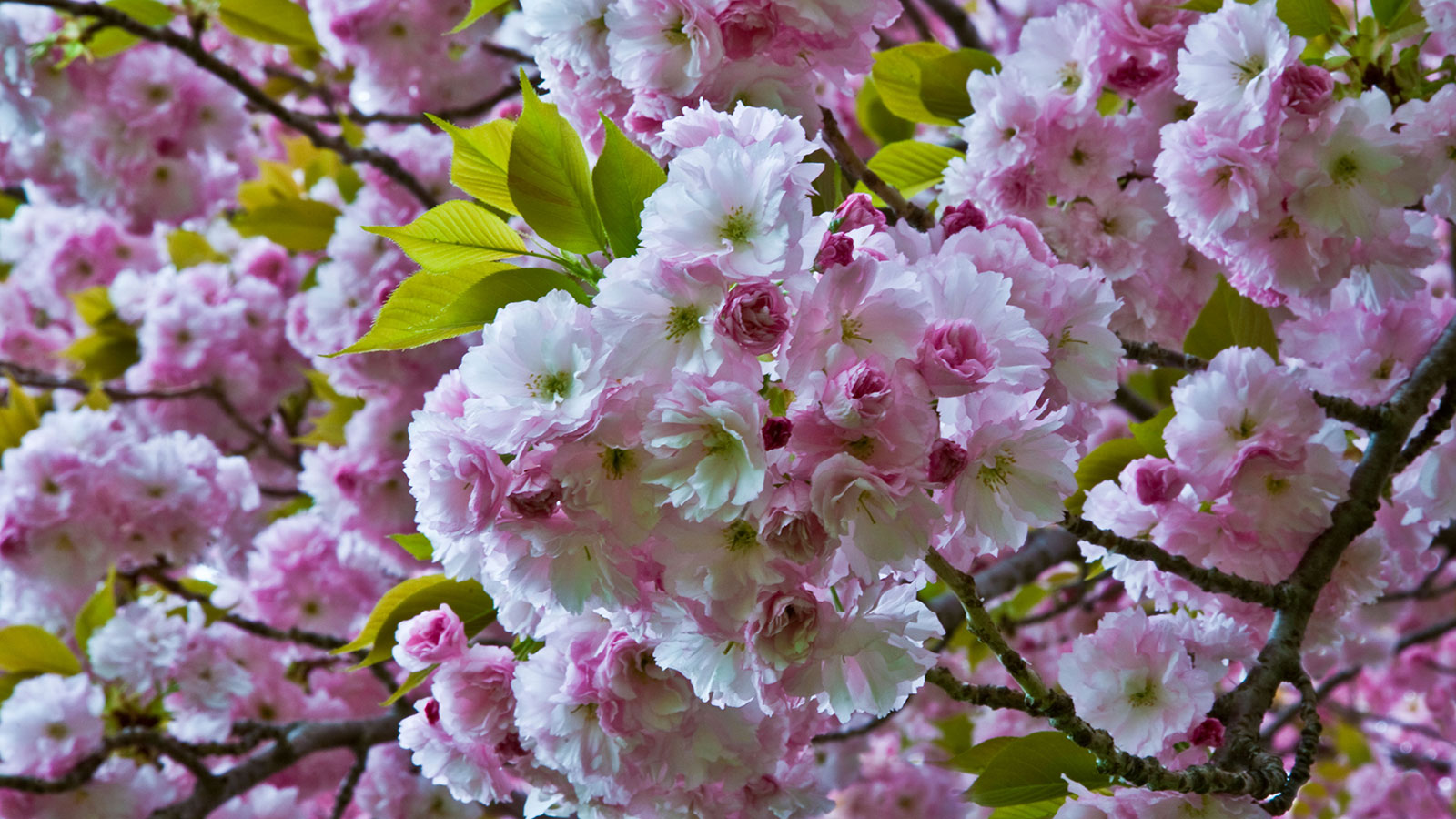
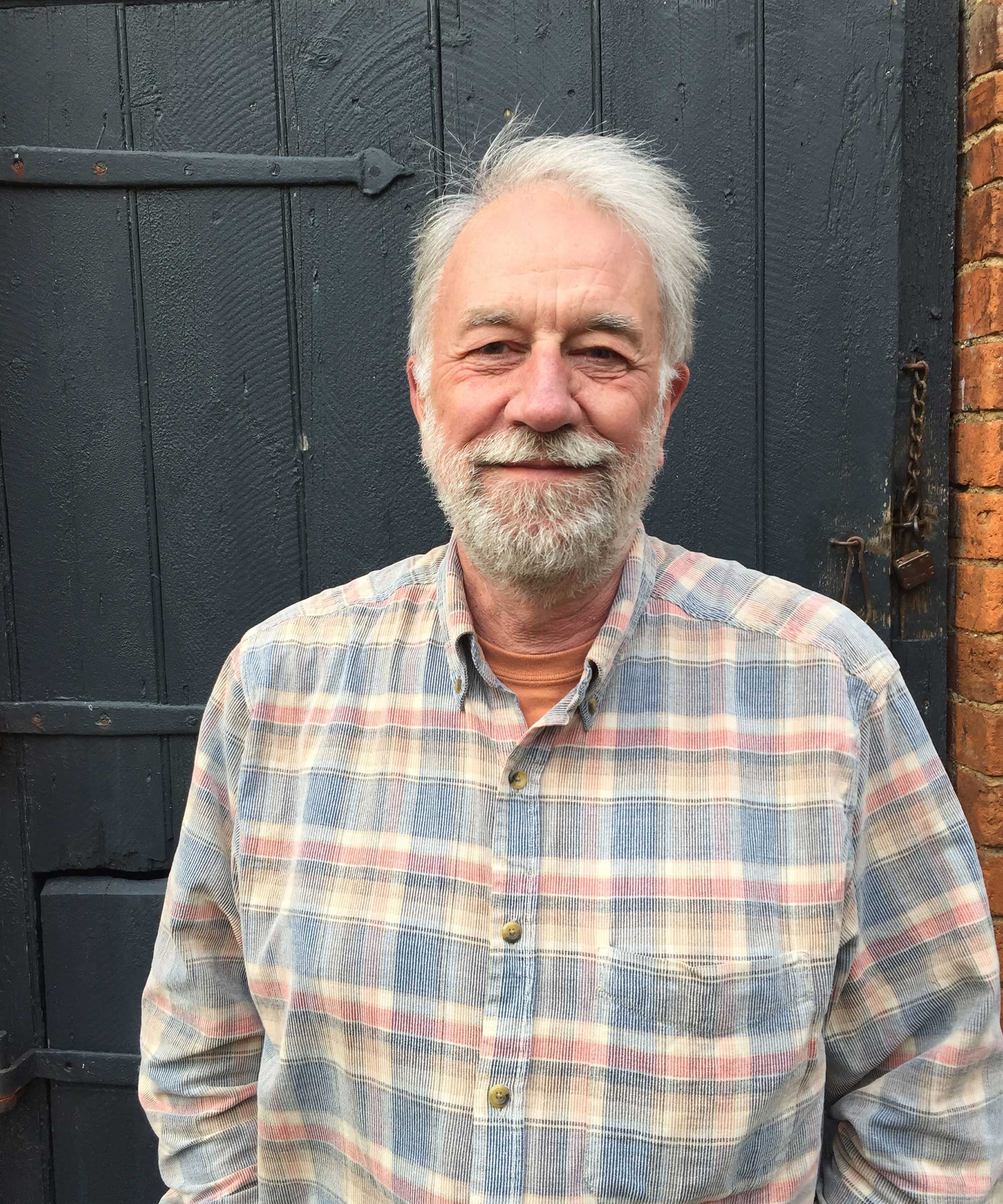
Flowering cherry trees are perhaps the most dazzling flowering trees we can grow, as can be seen each spring when thousands of cherry trees bloom in Washington D. C. as part of the National Cherry Blossom Festival. With their billowing clouds of pink or white spring blossoms, cherry blossom trees make a captivating sight in our nation’s capital or in a suburban backyard.
They mature as small trees, rarely reaching the height of forest trees, so almost every yard has space for one. The simplest of cherry flowers have clusters of single flowers with five pink or white petals. Those with semi-double flowers have two or three extra rows of petals giving a fuller look, while many have double flowers with the mass of petals providing a more colorful display for longer than single flowered varieties. Some are fragrant, and some are considered to be fast-growing flowering trees too.
Most flowering cherry trees come with an additional selling-point: their foliage develops fiery red, orange and yellow shades in fall. Some also feature young leaves that are purplish in spring and their bark, too, can be attractive as some flowering cherries have shining mahogany colored bark that creates winter interest. The experts at Garden Design magazine highly recommend them too. 'Flowering cherry trees are an excellent choice for home gardens because they require minimal care,' they say. 'In addition to spectacular cherry blossoms, they provide year-round color and interest with seasonally changing foliage and attractive bark.'
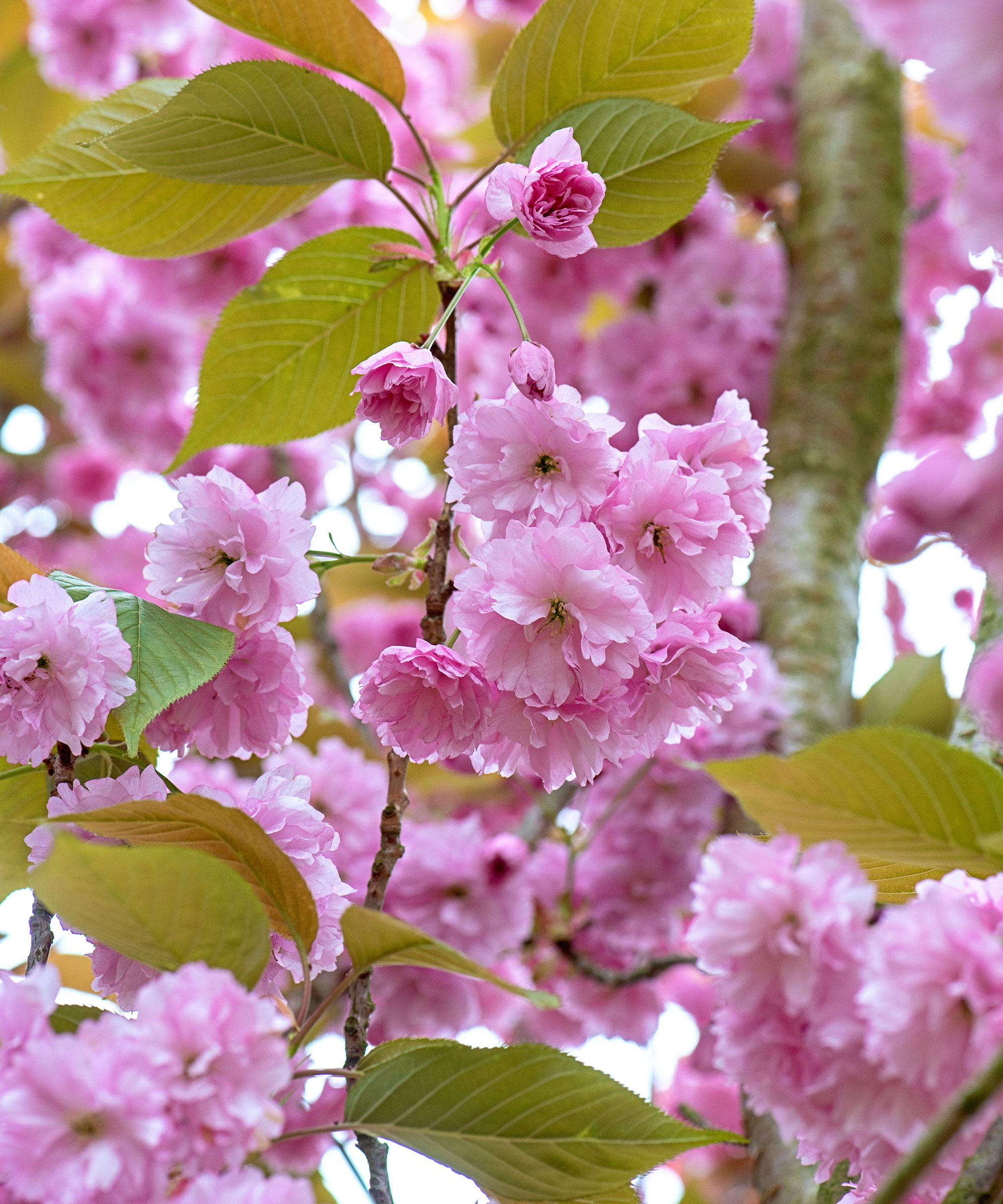
The sight of spring blossom on a prunus 'Kanzan' is hard to beat

Graham has a wealth of knowledge in all things horticulture. He trained at the prestigious Royal Botanic Gardens in Kew, England, and since then has written more than 20 books on plants and gardening and been a judge at the Chelsea Flower Show. He gardened in Pennsylvania for 20 years, but has recently returned to his native England.
Flowering cherry tree key facts:
- Plant type: Deciduous tree
- Mature size: 6-50ft
- Soil type: Any fertile soil that is not parched or waterlogged
- Soil pH: Neutral, alkaline
- Time to plant: Spring, fall
- Flowering time: Spring
- Flower color: White, pink, magenta-pink
- Hardiness zones: USDA Z5-8
- Scientific name: Flowering cherry
- Common name: Prunus
Different kinds of flowering cherry trees
The experts at the Brooklyn Botanic Garden remind us: 'No one tree remains in flower for more than a week, and there is no moment when all are blooming at once. Instead, different species and cultivars blossom in succession, allowing many opportunities to savor the season.'
There are two main kinds of flowering cherry trees to choose from:
- Japanese flowering cherry trees Grown in Japan for over a thousand years, these are generally small and easy-to-grow trees maturing into a range of shapes from low and weeping to tall and upright. The different varieties flower at different times between early and late spring, usually for just a few weeks, although choosing two or three different varieties can ensure color for two months. The flowers may be single, semi-double or double and white or creamy in color, or in shades of pink from dark magenta rose to blushed white. Japanese cherries tend to be fast growing but short-lived.
- Winter flowering cherry trees Varieties of winter cherry, Prunus x subhirtella, flower intermittently from fall to early spring in mild areas, in colder zones they bloom in early spring or in mild periods in winter. The flowers are pink or white and there are some delightful weeping varieties. Most have attractive fall foliage, so are a good option if you want a tree for fall color.
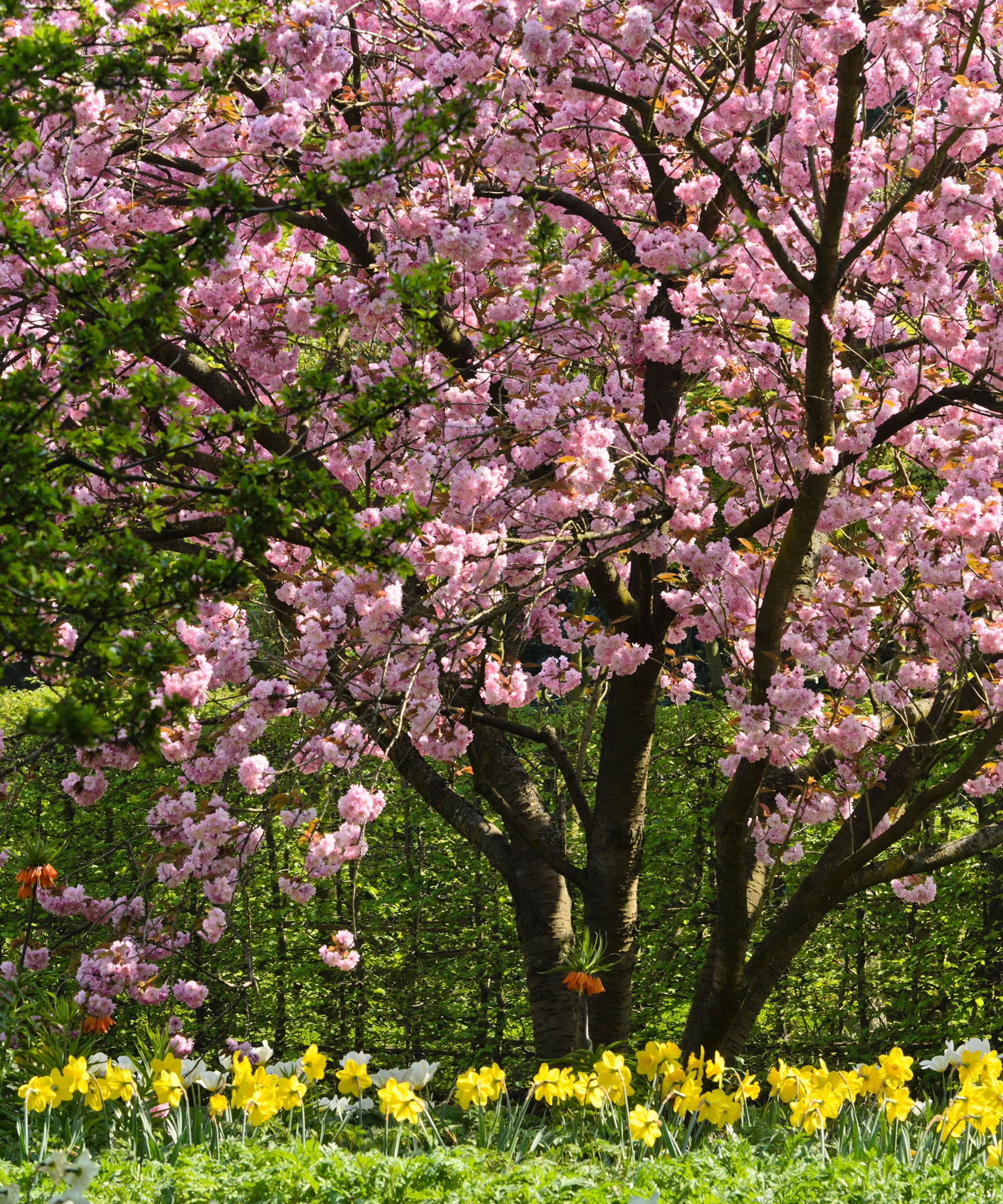
A flowering cherry tree makes a beautiful addition to any backyard
How to choose the right flowering cherry tree for your yard
Almost all varieties bloom in spring so, when it comes to choosing flowering cherries, decide which flower color you prefer and whether you need an upright-growing tree, a rounded tree, or a weeping tree.
If you intend to plant more than one as a backyard or front yard tree, consider varieties with different flower colors or that flower at different times.
‘Accolade’ (semi-double pink) has spreading growth, ‘Kwanzan’ (deep pink double) is more upright, ‘Royal Burgundy’ (double rose pink) has upright growth and dark purple leaves, the Yoshino cherry, Prunus yedoensis (single white), available from Fast Growing Trees, makes an umbrella-shaped tree.
For a more natural look, choose one of the other flowering cherries such as Prunus cerasifera ‘Pissardii’ (pink flowers, dark red foliage) or Sargent’s cherry (Prunus sargentii) (pink flowers with spectacular fall foliage).
In mild areas (USDA Z7-8), Prunus x subhirtella ‘Autumnalis’ is a joy as it flowers when almost nothing else is in bloom.
Monrovia, the top tree supplier, recommends ‘Kwanzan’ flowering cherry, which it sells online. 'A lovely specimen tree that puts on an incredible early season show with clusters of large, double deep pink blooms backed by bronze-red new growth. An upright, vase-shaped branching habit perfect for lining a road or driveway. A stunning lawn specimen.'
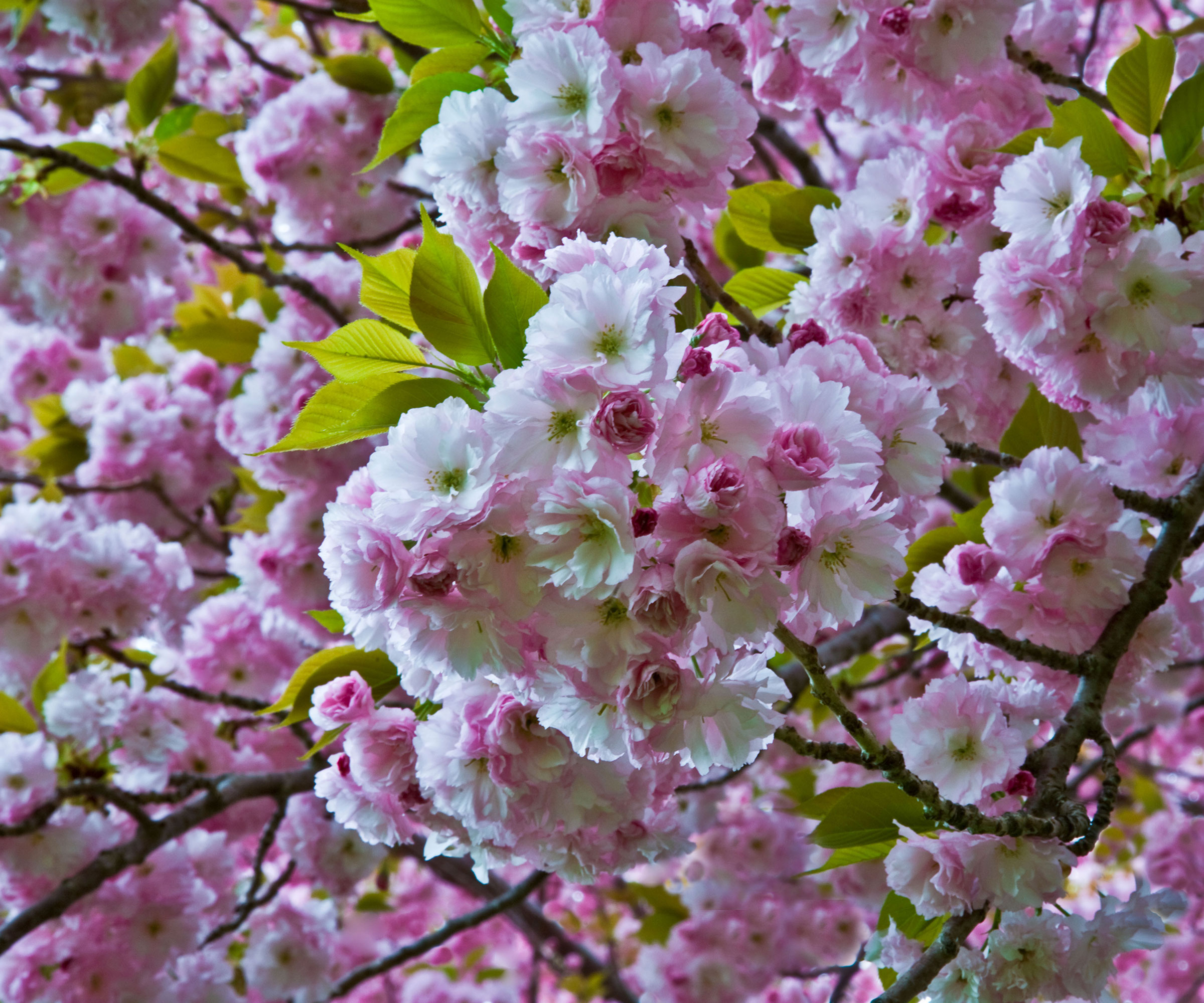
Prunus serrulata 'Kwanzan'
How to plant flowering cherries
Flowering cherries appreciate full sun and tolerate most soil types. Plant in fall, spring or, in zone 8 and 9, in mild spells in winter. Flowering cherries are unsuitable for the deep south as they need a cold period in winter to initiate flowering.
When considering how to plant a tree, it's relatively easy as flowering cherries need no special planting treatment. It does, however, pay to prepare the site well by adding plenty of well-rotted organic material, planting mix or soil improver. Irrigate regularly in the tree’s first season or two until established. Mulching after planting will help to retain moisture.
Staking is important too. Bare root trees and tubes can be staked with a 4ft vertical stake knocked in half way and the tree secured at the top of the stake. Containerized trees and balled-and-burlapped trees should have the stake set at an angle to avoid damaging the roots.
It is important not to damage the roots when planting as this may lead to unwanted shoots growing from the point of damage. It also pays to protect newly planted trees from deer and rabbits.
You can also choose to plant cherry trees in containers, as they are among the best pink flowering trees for pots.
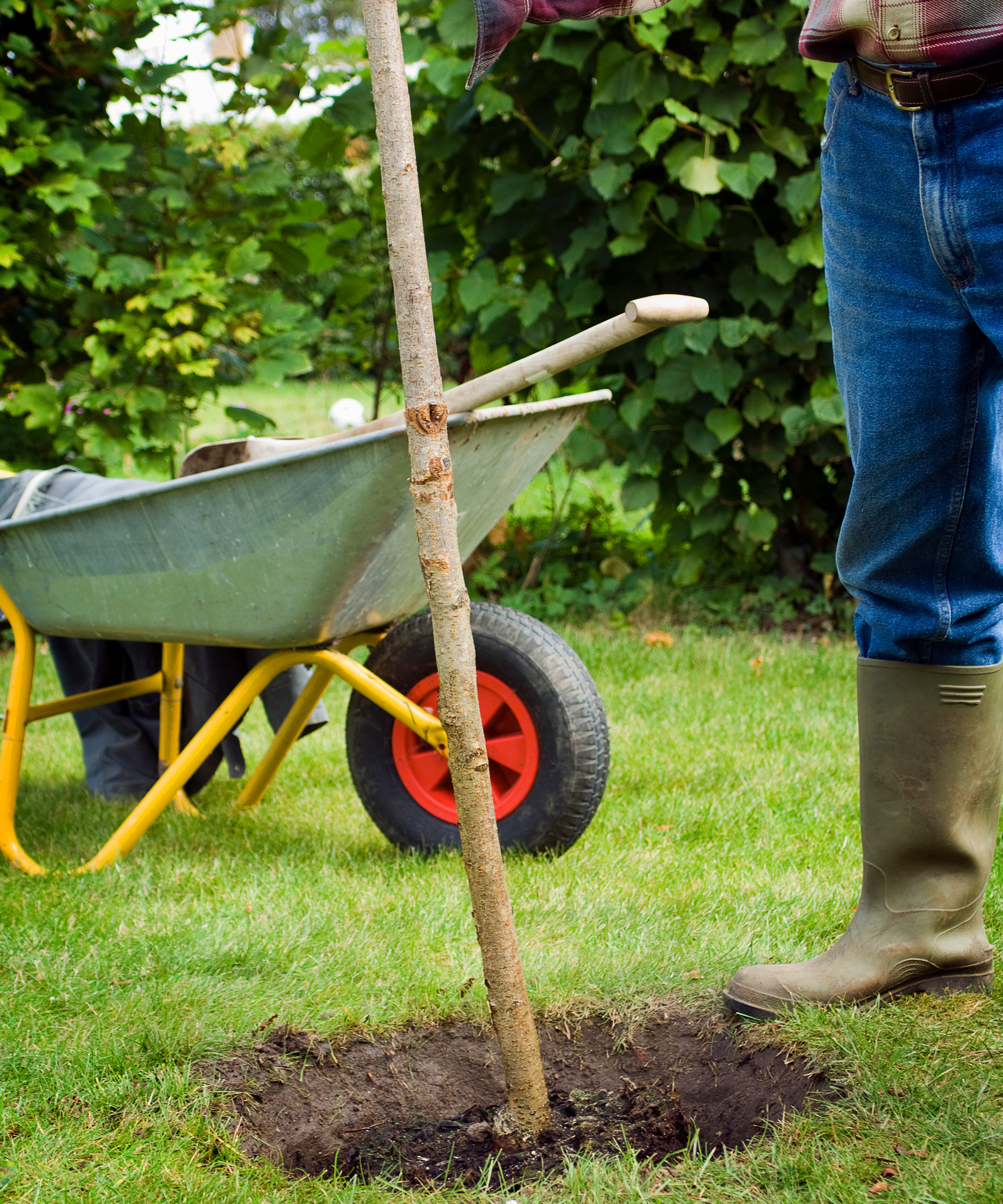
It's important to water your flowering cherry tree after planting
Flowering cherry care tips
Pruning a cherry tree is not always necessary as the trees tend to develop their natural form without help. If pruning becomes necessary, mid to late summer is the best time as the wounds heal much more quickly than at other times of year. Some diseases infect flowering cherries through pruning cuts, so limit pruning to essential shaping and repairs. However, if vigorous shoots spring up from the roots, or on the trunk, cut these off at once.
Renew you chosen type of mulch every year and feed annually, especially in the early years, as this helps your cherry blossom tree establish itself and grow well. Choose a specific tree feed, available online and in walk-in nurseries.
Waterlogging is often a cause of poor growth so avoid planting in badly drained sites and while it is important to keep newly planted trees moist, do not leave the sprinkler running too long.
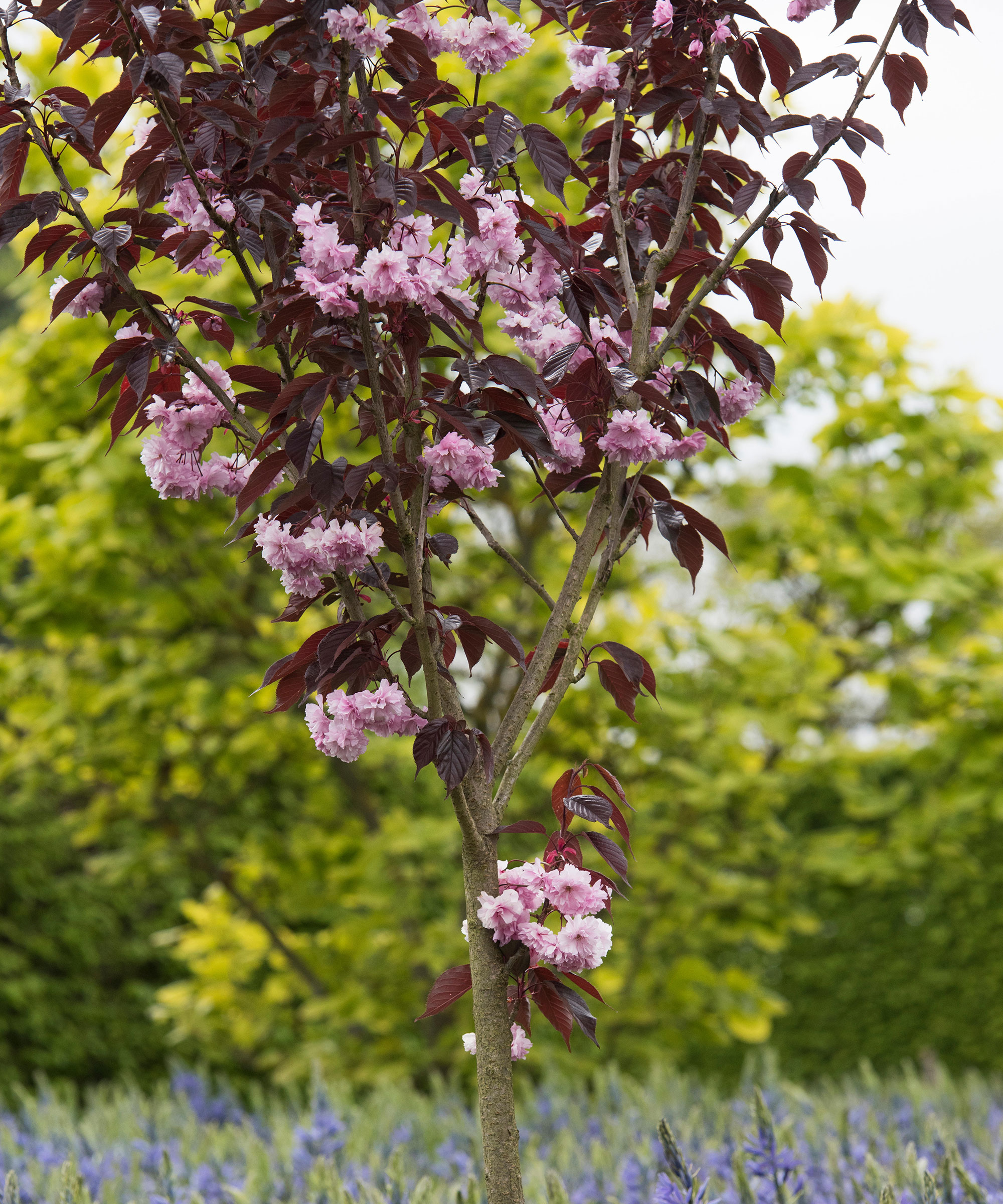
In addition to pretty pink flowers, Prunus 'Royal Burgundy' also boasts dark purple leaves
How to propagate a flowering cherry tree
Very few cherry blossom trees of any kind are easy for the home gardener to propagate. They rarely root from cuttings, many do not produce fruits, and few develop branches low enough to peg down to the soil so they can root.
Some flowering cherry trees, however, will produce fruits and each has a seed inside. These seeds can be started but they need special treatment.
- Once you have removed the seeds, place them under cold running water so you can rub off all the flesh leaving just the seeds.
- Fill a 5-6in flower pot with moist potting soil, tap it on the table to settle the soil, then space out the seeds an inch or two apart across the surface.
- Cover with more potting soil, then irrigate until the water seeps out of the pot’s drainage holes.
- Stand the pot in a plastic bag, seal it and place it in the crisper drawer in the refrigerator. Do not allow it to dry out.
- After three months move it outside where the seeds should sprout in the spring. However, when your new cherry trees eventually flower, they may well turn out to be different from the tree from which they came.
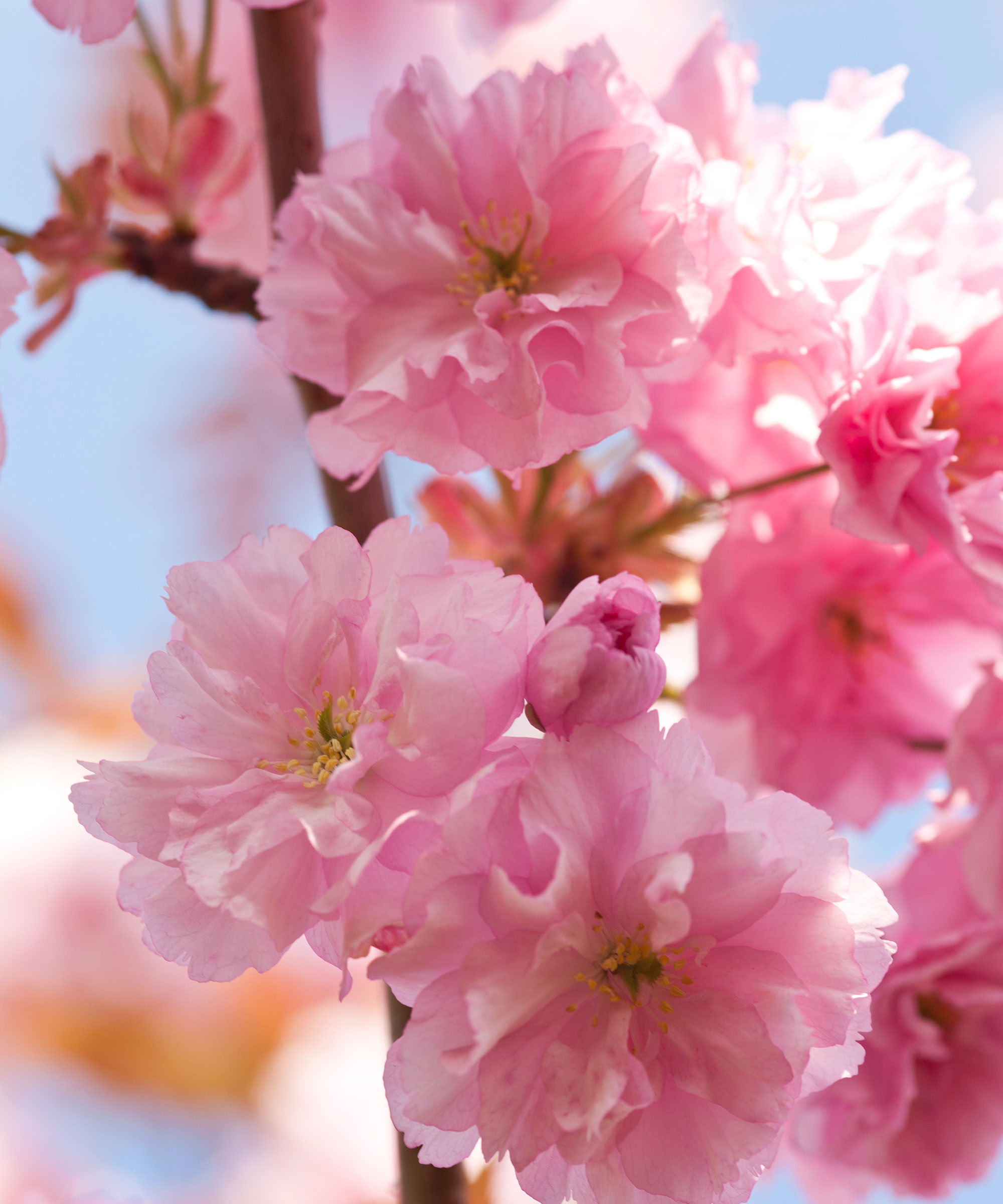
Key problems and how to solve them
A wide range of pests and diseases can cause problems with flowering cherries. Some can usually be ignored, some cannot be treated, others need attention.
Pest problems include tent caterpillars, peach tree borers, San Jose scale, aphids (blackfly etc.), and spider mites. Choosing whether or not to control your cherry pests, and what to use, can be a difficult decision.
Tent caterpillars can be controlled using a blast of water from the hose while caterpillars of all kinds can be controlled with the organic fungicide Bt, such as this Monterey LG 6336 Bacillus Thuringiensis from Amazon.
Possible disease problems include canker, silver leaf, leaf spots, dieback, leaf curl, powdery mildew, and fireblight. If in doubt, consult your extension service.
In general, cherry trees that are growing well and being fed and watered as necessary, suffer from the fewest problems.
Consider planting the rest of your yard with plants for birds or wildlife so they can feed on your cherry pests. Avoiding pruning also helps as some diseases infect through pruning cuts.
How tall and fast do flowering cherries grow?
How fast a cherry blossom tree grows depends on the size of tree that you buy. Most will start to flower a year or two after you plant them, although many trees bought at retail will be in bloom when you select them.
Trees supplied mail order will also usually take a year or two before blooming, trees grown in tubes are only a year or two old and will take a few more years to reach flowering size.
Most flowering cherry trees will mature at about 20-45ft. A few, including the neat and bushy Fuji cherry, 'Kojo-no-mai' (fragrant, white flowers) will reach only 4-6ft and can be a great option if you're searching for a good tree to grow in pots.
At the other extreme, ‘Kwanzan’ can mature at a height of 50ft while the closely related American native black cherry (Prunus serotina), can reach 125ft.
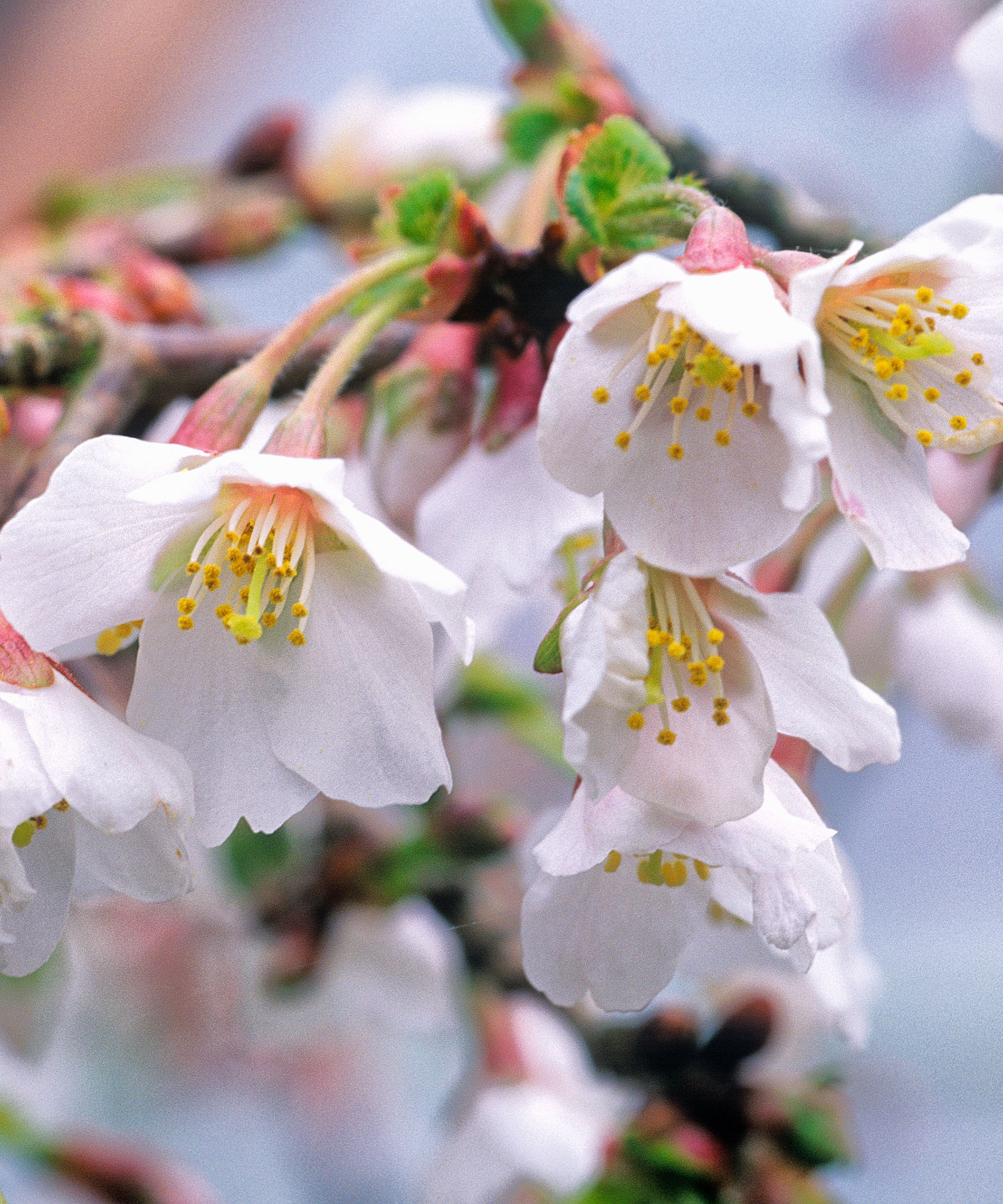
Fuji cherry, 'Kojo-no-mai', is an ideal choice for growing in pots
What's the best flowering cherry tree for a small garden?
Two features are important when choosing a tree for a small garden: height and shape. The Fuji cherry, 'Kojo-no-mai' is often more of a flowering shrub than a tree and can be grown in a container or makes a lovely small scale specimen in a sunny border. ‘Kiku-Shidare-Zakura’ (rose pink) grows only a little taller, and develops attractive weeping growth.
Varieties of flowering cherry with relatively narrow, upright growth, include ‘Amanogawa’ (pale pink, 15ft) and ‘Spire’ (pale pink, fiery fall color (25ft).

Prunus ‘Kiku-Shidare-Zakura’ is a weeping variety and good for smaller backyards
What's the most beautiful flowering cherry tree?
The Yoshino cherry (Prunus yedoensis), with broadly arching branches and double white flowers, is especially elegant or, if your taste runs to pink, then ‘Kwanzan’ is the old favorite.
Many see a variety that has clouds of spring flowers followed by fine fall color as the ideal, in which case Sargent’s cherry (Prunus sargentii) is the one to look for.
Finally, flowering Japanese cherries are sometimes sold grafted on to the a trunk of Tibetan cherry, with its peeling mahogany bark – this provides color and interest in both spring and winter.
Are flowering cherries deer reistant?
The diligent researchers at Rutgers New Jersey Agricultural Experiment Station have assessed a wide range of garden plants and rated them according to how much they are damaged by browsing deer.
Flowering cherries are rated as Seldom Severely Damaged, that’s one position above the most resistant of all, making them a good deer-resistant plant.
Why is there sticky gum oozing from my flowering cherry tree?
Thick, sticky orange gum oozing from the trunk or branch of a flowering cherry tree is not unusual. It is the tree’s reaction to bark damage which may be caused by one of a number of problems ranging from insect pest attack to fungal infection to physical damage. Accidentally scraping the trunk with the mower, string trimmer or brushcutter is a common cause.
However, oozing gum may also be the result of the tree growing poorly which can leave a tree vulnerable to insect and disease problems and which can lead to gumming.
The best advice is to plant your cherry blossom tree in the right place, prepare well before planting, irrigate and feed when necessary – and be careful with the mower.
How to buy flowering cherry trees
Cherry blossom trees are offered mail order as container-grown plants in a variety of pot sizes from tubes to ten gallon pots and in plant sizes from 12in up to 6ft, sometimes more. The smaller the tree the less expensive it will be, but the longer you will have to wait until it is large enough to make an impact.
They are also sold balled-and-burlapped – that is, dug from the nursery and the soil and roots wrapped in burlap for shipping. They may also be offered bare root, that is – dug from the nursery and with the dirt shaken from the roots for shipping.
In walk-in nurseries, containerized plants and balled-and-burlapped trees are offered in full flower.
Container-grown trees give you the most margin for error in terms of aftercare, but tubes are the most economical in terms of list price and shipping costs.
- Shop flowering cherry trees at Amazon
- Shop flowering cherry trees at Fast Growing Trees
- Shop flowering cherry trees at Forest Farm
- Shop flowering cherry trees at Monrovia
- Shop flowering cherry trees at Nature Hills
Another tree with brilliant blossom, and a cousin of the cherry tree in the Rosaceae plant family, is the almond tree. Consider planting an almond tree this year for delicate white and pink blossom that will complement any cherry tree in your yard.
Sign up to the Homes & Gardens newsletter
Design expertise in your inbox – from inspiring decorating ideas and beautiful celebrity homes to practical gardening advice and shopping round-ups.

Graham Rice is a garden writer who has won awards for his work online, and in books and magazines, on both sides of the Atlantic. He is a member of a number of Royal Horticultural Society committees and the recipient of the 2021 Garden Media Guild Lifetime Achievement Award. He gardened in Pennsylvania for 20 years, but has recently returned to his native England.
-
 These are the 6 must-have colors to decorate with in April 2025
These are the 6 must-have colors to decorate with in April 2025What do retro-inspired yellows and beautiful blues all have in common? They're on our hot list for the season ahead
By Sophia Pouget de St Victor Published
-
 Plants never to grow next to fruit trees
Plants never to grow next to fruit treesExpert advice on which plants to keep away from fruit trees to encourage a healthy harvest
By Jacky Parker Published